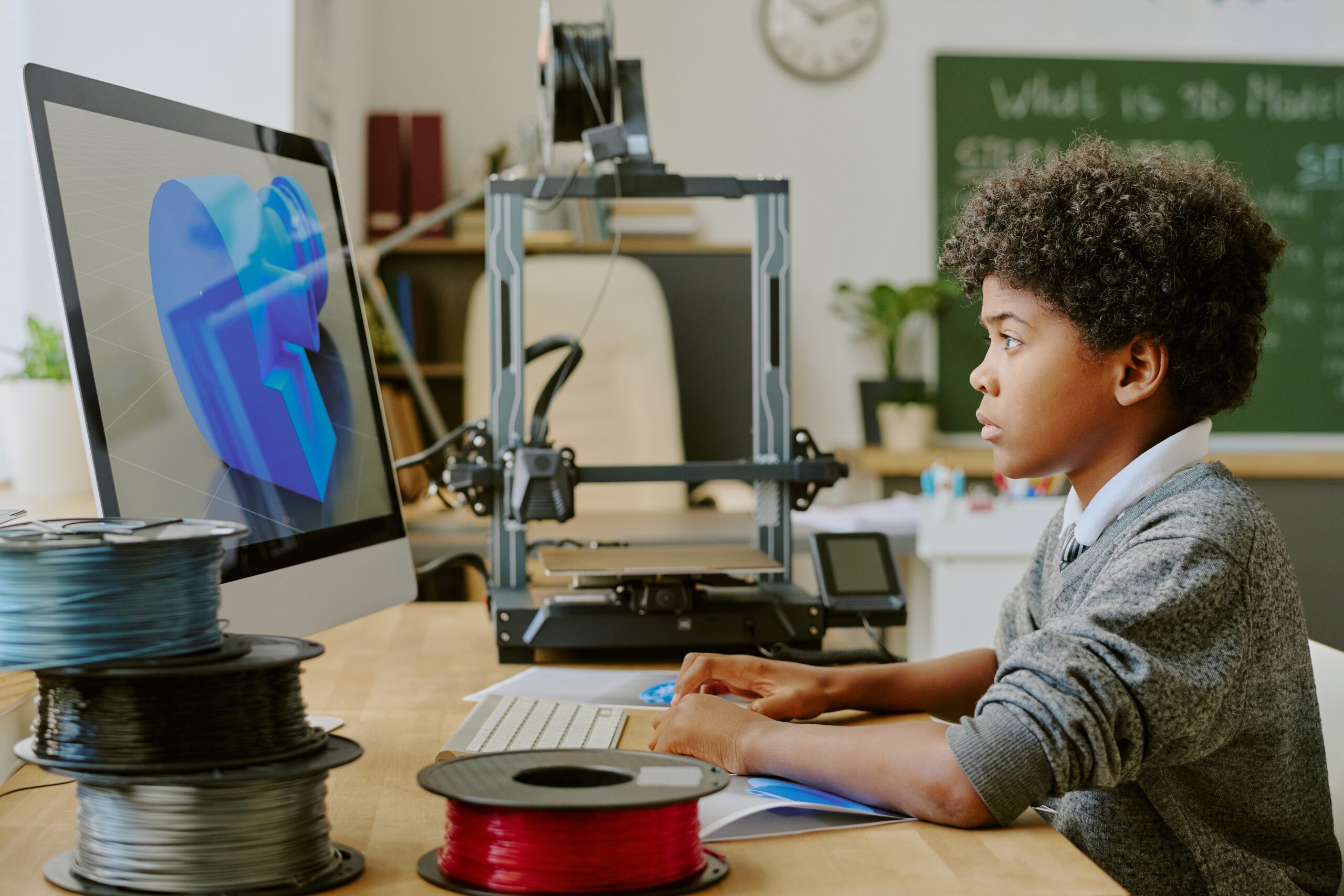The classroom has always been a place of learning, where students have engaged with traditional tools like pencils, paper, and textbooks to grasp new concepts. However, technology is rapidly evolving, and our youth are moving in the same direction. Educators cannot continue using the same archaic tools of years past. They need innovative solutions in the classroom to enhance their teaching, capture and sustain attention, and ensure their students keep up with innovative technologies in the workplace.
3D printers have become an incredible option for accomplishing these objectives. These devices, once primarily used in industrial settings, have established a firm foothold in all sorts of educational environments, offering exciting new possibilities for both students and teachers.
Let’s see how schools leverage 3D printers in the classroom to foster creativity, hands-on learning, and critical thinking skills.
Bringing Abstract Concepts to Life
3D printers help students visualize abstract concepts. Whether in science, mathematics, or engineering, some topics can be difficult to grasp through traditional textbooks and diagrams alone. 3D printing allows teachers to create tangible, three-dimensional representations of these ideas for more memorable, comprehendible lessons that will stick with students for years to come.
Here are some examples:
A biology class can print models of human organs, cellular structures, or even entire organisms.
Geometry students can create 3D shapes to understand volume, surface area, and the properties of geometric solids.
This hands-on approach helps solidify complex theories, turning abstract ideas into something students can physically interact with and study from multiple angles. How much better would you understand how the human heart functions after holding all its individual and collective parts in your hands?
Fostering Creativity and Design Thinking
3D printing encourages students to be problem solvers and think like inventors. With the ability to design and print their own creations, students gain a sense of ownership over their learning. They can design prototypes for engineering projects, create art pieces, or even develop functional objects to address real-world challenges while pursuing personal passions.
For instance, a design technology class could brainstorm, sketch, and operate 3D printers to turn their ideas into prototypes. This hands-on process allows them to experiment with design iterations, testing and improving their creations while seeing which ideas work and which don’t in real-time. It also introduces them to the concepts of prototyping, product development, and repetition—all valuable skills that will help them secure value-add careers in today’s fast-paced technological landscape.
Enhancing STEM Education
STEM (Science, Technology, Engineering, and Math) education is a key focus in many classrooms today. 3D printers can fit into any STEM classroom as a tool within a wide variety of curricula. Students can design and print mechanical parts to assemble machines, build models of structures to test architectural principles and explore chemical reactions by printing molecular structures.
Using 3D printers, students can develop a deeper understanding of how STEM concepts are interconnected.
Science: Print gears or pulleys to explore simple machines in Physics.
Technology: Study the various materials used, design technology options, and how the printer functions to create each of its prints. Then watch it work live.
Engineering: Design functional, mechanical devices to test students’ prototypes.
Math: Explore fractions and ratios by printing objects in a variety of interconnected pieces students can manipulate.
These real-world applications make STEM concepts more engaging and help students see the practical uses of what they’re learning.
Personalized Learning, Collaboration and Problem Solving
3D printing can also be an excellent tool for personalized learning. Not every student learns the same way, and 3D printers can help meet different learning styles and needs. For students with disabilities or those who struggle with traditional methods of learning, 3D printing can provide customized educational tools and resources that cater to their unique needs.
3D printers create great potential for collaborative work. Students can hone their interpersonal skills by working in teams to brainstorm, design, and refine a 3D object. This type of project-based learning encourages teamwork, communication, and problem-solving skills, which are crucial in academic and real-world contexts.
Fostering a fun environment for collaboration encourages critical thinking as students must consider multiple perspectives, test ideas, and troubleshoot issues together. Could you imagine your students working together to build a model of a sustainable city or creating a mechanical device to solve a particular real-world challenge? Working together on these projects helps students learn to share ideas, give constructive feedback, and refine their solutions.
Preparing Students for Future Careers
Incorporating 3D printing into the classroom is more than just a fun and creative learning tool. It’s also a way to prepare students for careers in emerging fields. As this technology advances, the demand for professionals with expertise in design, engineering, and manufacturing will only grow.
By giving students hands-on experience with 3D printers, schools can help equip them with the skills they’ll need in industries like manufacturing, aerospace, automotive, healthcare, and architecture. They’ll also gain experience with computer-aided design (CAD) software and learn about the digital fabrication process, which is highly relevant to the modern workforce.
Our Feelings
3D printing is more than just a cool gadget. It’s a transformative tool that has the potential to revolutionize the way students learn and create. From visualizing complex concepts to fostering creativity, collaboration, and STEM skills, 3D printers can enhance the classroom experience and prepare students for the future. Whether students are designing models, experimenting with prototypes, or simply bringing their ideas to life, 3D printers offer endless opportunities for hands-on, engaging, and personalized learning. Students will be excited for each lesson!
Check out some of our 3D printing options here: Aidex East – 3D Printers






